Plantfit
Log in / Register
Existing customer?
New customer?
Create an account to track your orders, access our customer service and, if you wish, make the most of our upcoming offers.
My Account
Hello
Shipping country and language
Your country of residence may be:
For a better user experience on our website, you can select:
Your shipping country:
Andorra
Austria
Belgium
Bulgaria
Croatia
Czechia
Denmark
Estonia
Finland
France
Germany
Greece
Hungary
Iceland
Ireland
Italy
Latvia
Lithuania
Luxembourg
Monaco
Netherlands
Poland
Portugal
Romania
Slovakia
Slovenia
Spain
Sweden
Switzerland
Language:
French
English
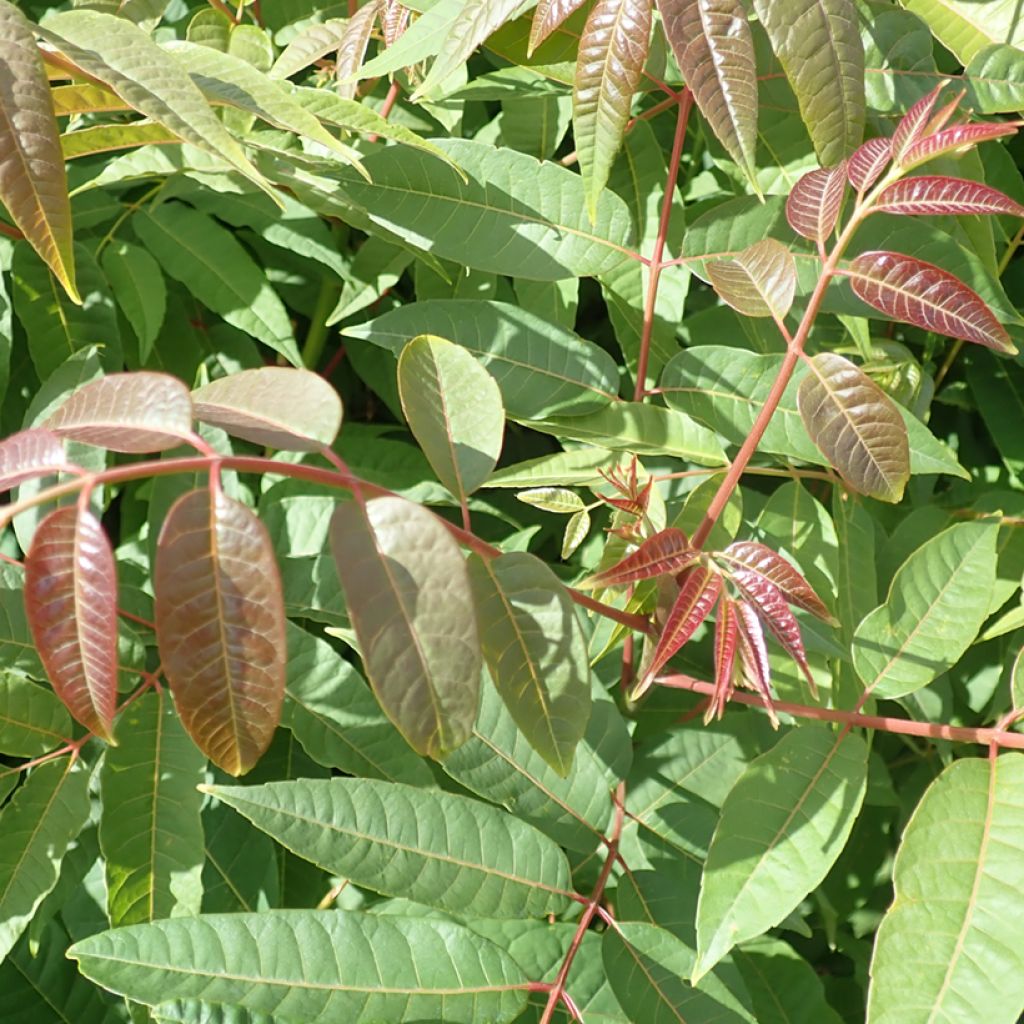

Cedrela sinensis, Toona sinensis - Acajou de Chine
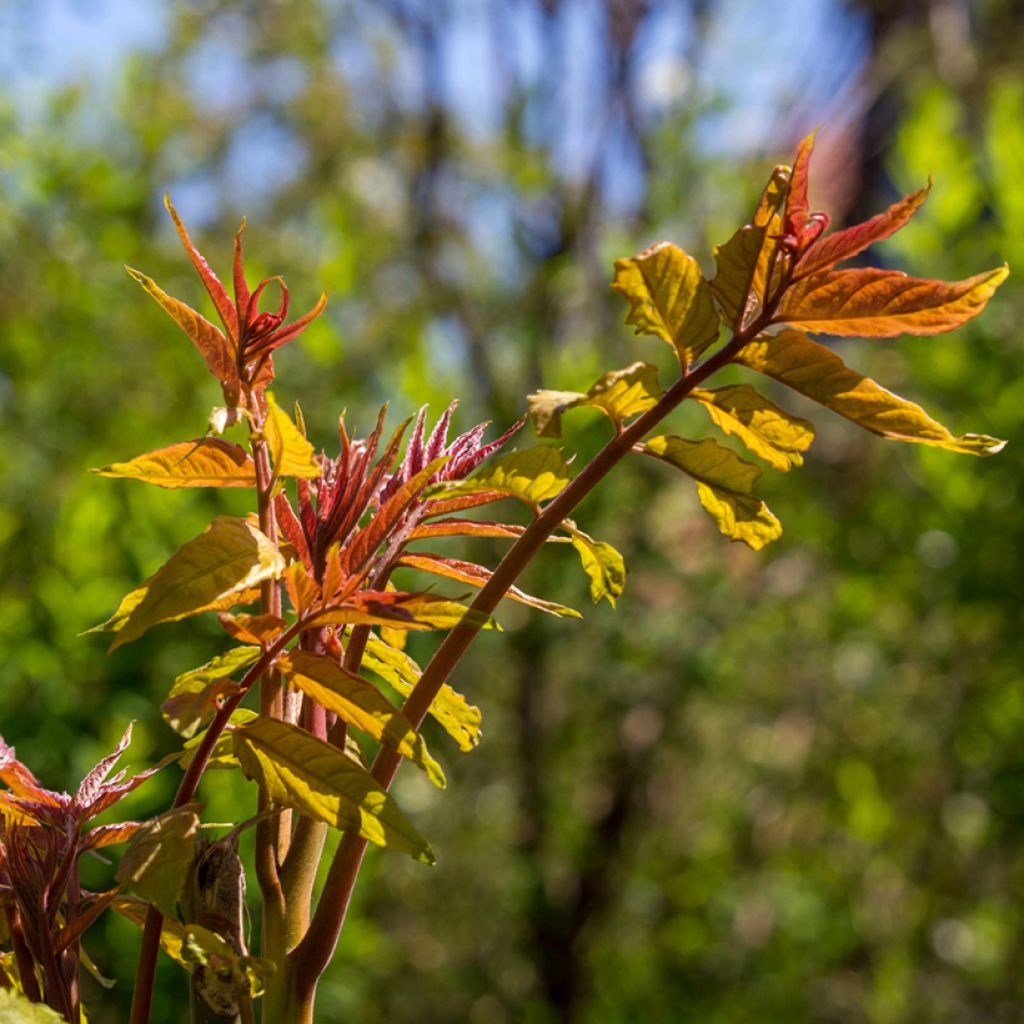

Toona sinensis - Acajou de Chine
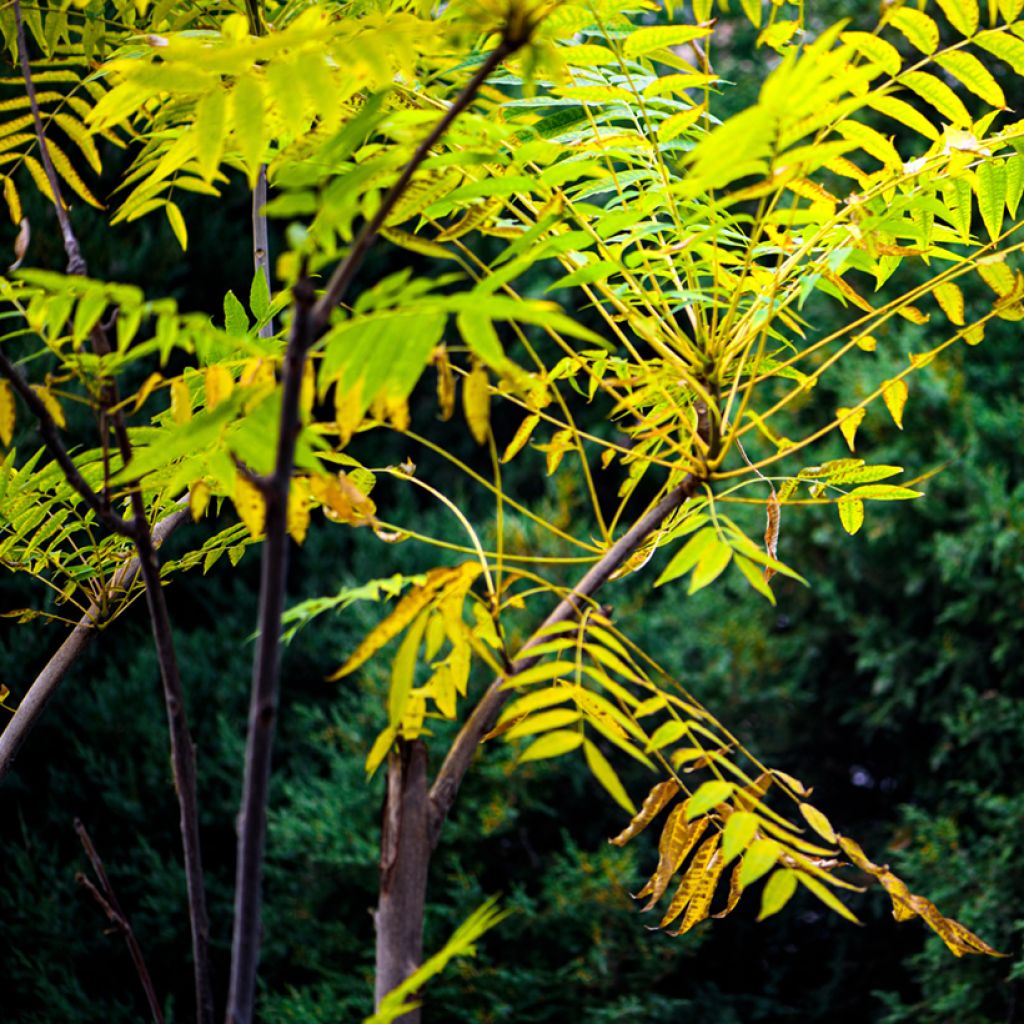

Toona sinensis - Acajou de Chine
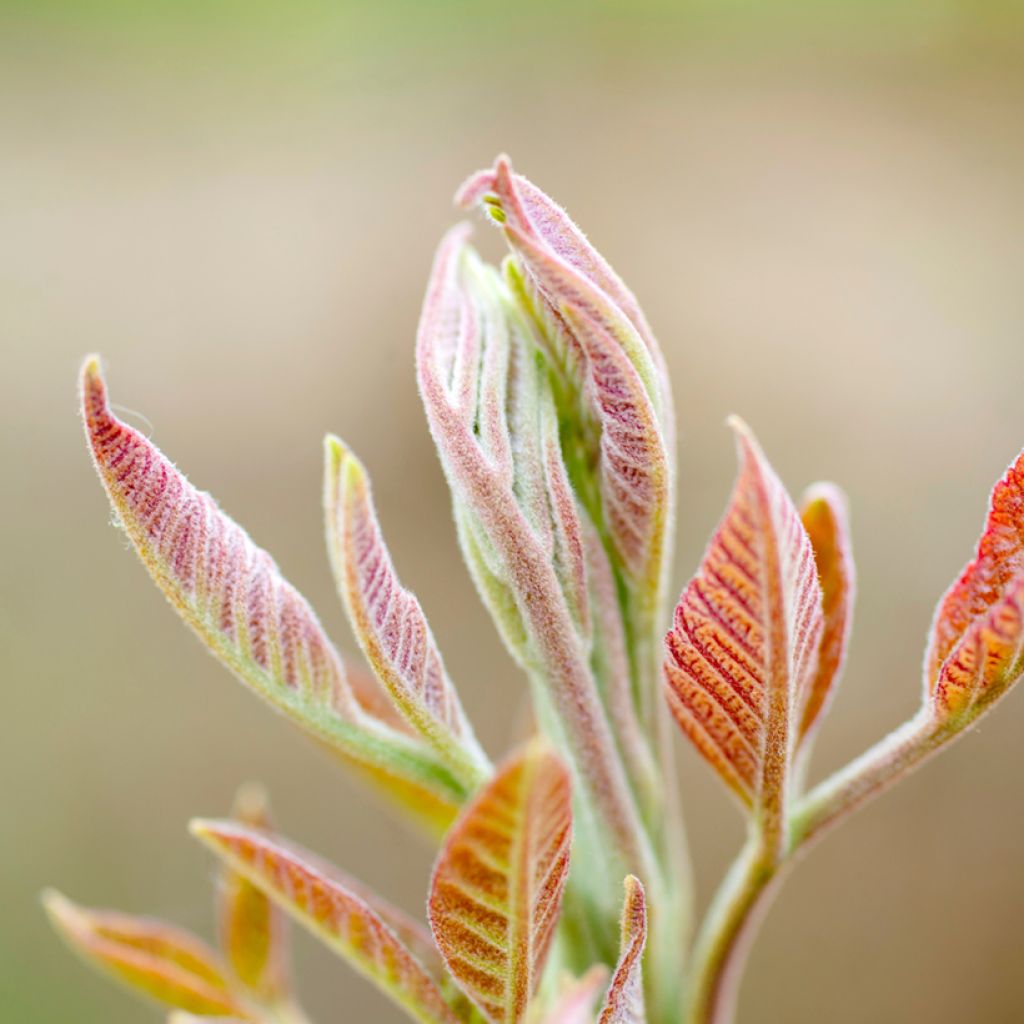

Toona sinensis - Acajou de Chine
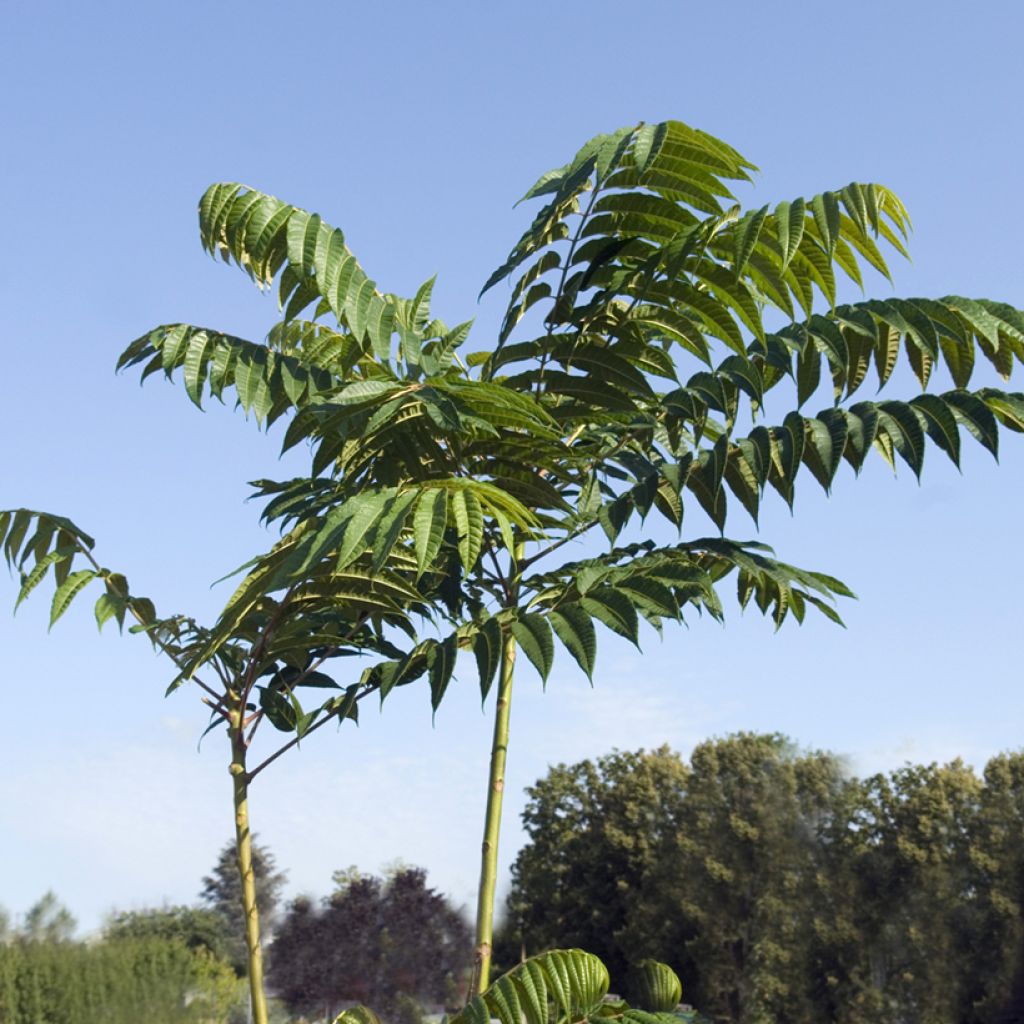

Toona sinensis - Acajou de Chine
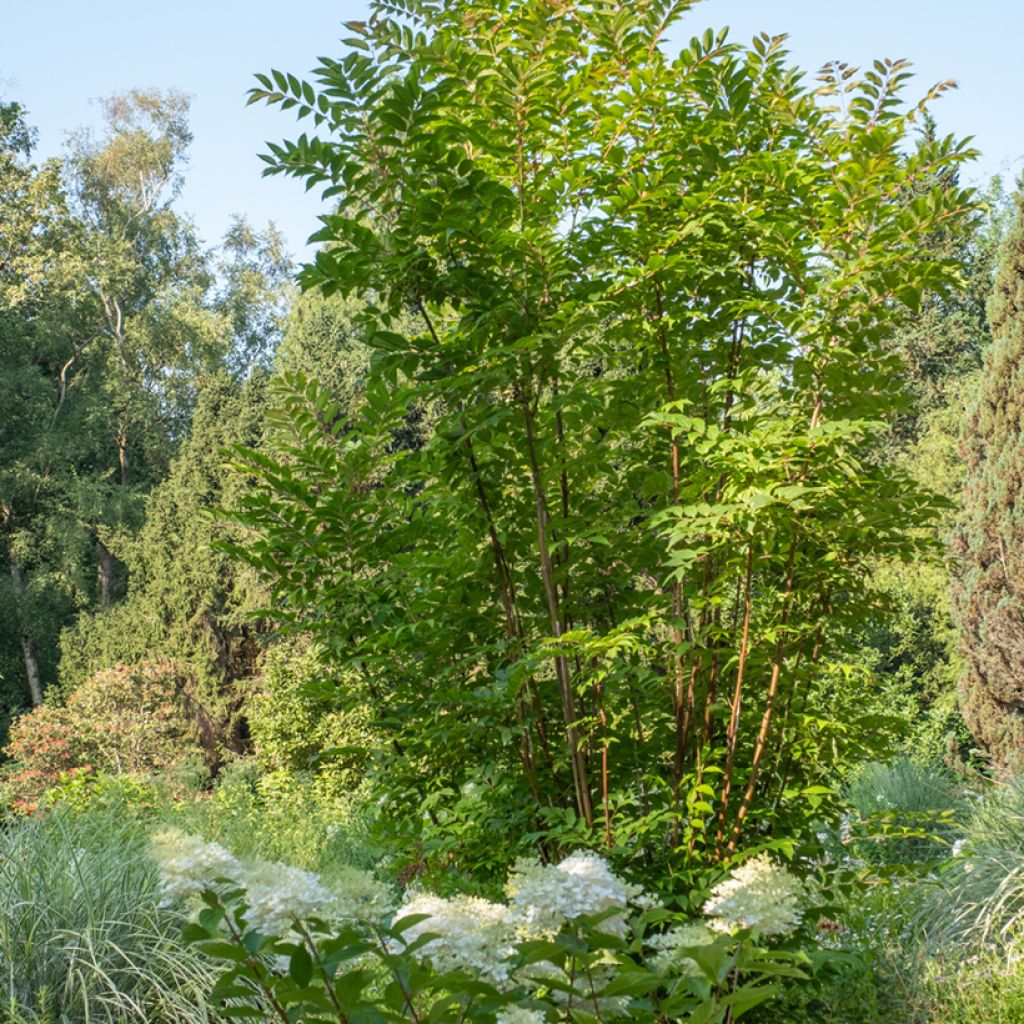

Cedrela sinensis, Toona sinensis - Acajou de Chine
Toona sinensis - Chinese Mahogany
Toona sinensis
Chinese Mahogany, Chinese Toon, Red Toon, Chinese Cedar
Order in the next for dispatch today!
Dispatch by letter from €3.90.
Delivery charge from €5.90 Oversize package delivery charge from €6.90.
More information
This item is not available in your country.
Select delivery date,
and select date in basket
This plant carries a 24 months recovery warranty
More information
We guarantee the quality of our plants for a full growing cycle, and will replace at our expense any plant that fails to recover under normal climatic and planting conditions.
Oversize package: home delivery by special carrier from €6.90 per order.
Express home delivery from €8.90.
Does this plant fit my garden?
Set up your Plantfit profile →
Description
Cedrela or Toona sinensis, commonly known as Chinese Mahogany, is an interesting Chinese tree known for its fast growth, elegant foliage, and light silhouette. While it doesn't have the grace of Ailanthus altissima (the tree of heaven), the Chinese cedar will replace it advantageously, as it does not have its invasive character. Its finely divided foliage spreads at the top of a slender trunk covered with grey and fissured bark, whose resinous aroma evokes that of cedar. It is a beautiful tree for lining streets and also makes a beautiful specimen to plant alone in a large garden. To succeed in its cultivation, it should be planted in a sunny location, in fertile and moist soil, sheltered from cold winds, under a temperate climate.
There is confusion in the naming of this tree. Sources call it Toona sinensis, Cedrela toona, or Cedrela sinensis. The genus Cedrela, exclusively American, is currently separated from the genus Toona, native to the Old World. Toona sinensis, or Chinese Cedar, the only commercially available species, belongs to the Meliaceae family, just like Melia azedarach. It is native to Eastern and Southern China, as well as Southeast Asia. This tree has a rapid growth rate, especially in the first 10 years. Its habit is initially slender, then the canopy widens over time, but its crown never becomes very wide; it is fairly open and not very dense. Eventually, the Chinese Mahogany measures on average 17.5m (57ft) in height and 9.5m (31ft) in spread. The deciduous foliage is a major asset of this plant, composed of leaves 50 to 70cm (20 to 28in) long, divided into numerous ovate and pointed leaflets. Their colour is a fairly light green, with veins and petioles that are more or less reddish in spring. In autumn, the entire foliage takes on a beautiful yellow to orange hue. The flowering is quite discreet and appears on mature subjects. It takes place from May to early July depending on the climate. It forms at the axils of the leaves, in the form of small inconspicuous cream-white inflorescences composed of very small fragrant flowers. The remarkable bark of the Chinese Mahogany is greyish in colour. It cracks and peels in long strips over the years. Its grey-pink wood contains a resin-scented aromatic principle. It is highly prized in cabinet-making.
Toona sinensis is a relatively hardy species, capable of tolerating short frosts of around -12 to -15°C (10.4 to 5°F) once mature. Young specimens are more sensitive to harsh winters. It is preferable to adopt it in regions where winters are rather mild, and summers are sufficiently rainy. It will need protection from cold winds. Plant it alone or in the company of shrubs and perennials planted all around its base. For example, you can plant Japanese grasses, Carex, or Ophiopogons at its base. In autumn, the blue or purple stars of asters will complement the warm tones of its foliage. Its proximity to water sources is beneficial as long as the soil is not waterlogged, but well-drained.
Toona sinensis - Chinese Mahogany in pictures


Plant habit
Flowering
Foliage
Botanical data
Toona
sinensis
Meliaceae
Chinese Mahogany, Chinese Toon, Red Toon, Chinese Cedar
China
Planting and care
Plant Toona sinensis in spring or, at most, in autumn in mild climates. Plant it in deep, fertile, light, and well-drained soil that remains moist throughout the year. If your soil is poor and sandy, add compost at planting. The soil's pH is not important to it; it can tolerate slightly acidic, neutral, or even slightly alkaline soils. Choose a well-exposed location, in full sun, but sheltered from cold and dry winds. Monitor the watering to help it establish. A well-established tree can withstand short frosts of about -12 to -15°C (10.4 to 5°F). During the first few winters, install a thick winter cover if very low temperatures are expected. Mulch the soil in summer to maintain moisture at its base.
Planting period
Intended location
Care
This item has not been reviewed yet - be the first to leave a review about it.
Striking foliage shrubs
Haven't found what you were looking for?
Hardiness is the lowest winter temperature a plant can endure without suffering serious damage or even dying. However, hardiness is affected by location (a sheltered area, such as a patio), protection (winter cover) and soil type (hardiness is improved by well-drained soil).

Photo Sharing Terms & Conditions
In order to encourage gardeners to interact and share their experiences, Promesse de fleurs offers various media enabling content to be uploaded onto its Site - in particular via the ‘Photo sharing’ module.
The User agrees to refrain from:
- Posting any content that is illegal, prejudicial, insulting, racist, inciteful to hatred, revisionist, contrary to public decency, that infringes on privacy or on the privacy rights of third parties, in particular the publicity rights of persons and goods, intellectual property rights, or the right to privacy.
- Submitting content on behalf of a third party;
- Impersonate the identity of a third party and/or publish any personal information about a third party;
In general, the User undertakes to refrain from any unethical behaviour.
All Content (in particular text, comments, files, images, photos, videos, creative works, etc.), which may be subject to property or intellectual property rights, image or other private rights, shall remain the property of the User, subject to the limited rights granted by the terms of the licence granted by Promesse de fleurs as stated below. Users are at liberty to publish or not to publish such Content on the Site, notably via the ‘Photo Sharing’ facility, and accept that this Content shall be made public and freely accessible, notably on the Internet.
Users further acknowledge, undertake to have ,and guarantee that they hold all necessary rights and permissions to publish such material on the Site, in particular with regard to the legislation in force pertaining to any privacy, property, intellectual property, image, or contractual rights, or rights of any other nature. By publishing such Content on the Site, Users acknowledge accepting full liability as publishers of the Content within the meaning of the law, and grant Promesse de fleurs, free of charge, an inclusive, worldwide licence for the said Content for the entire duration of its publication, including all reproduction, representation, up/downloading, displaying, performing, transmission, and storage rights.
Users also grant permission for their name to be linked to the Content and accept that this link may not always be made available.
By engaging in posting material, Users consent to their Content becoming automatically accessible on the Internet, in particular on other sites and/or blogs and/or web pages of the Promesse de fleurs site, including in particular social pages and the Promesse de fleurs catalogue.
Users may secure the removal of entrusted content free of charge by issuing a simple request via our contact form.
The flowering period indicated on our website applies to countries and regions located in USDA zone 8 (France, the United Kingdom, Ireland, the Netherlands, etc.)
It will vary according to where you live:
- In zones 9 to 10 (Italy, Spain, Greece, etc.), flowering will occur about 2 to 4 weeks earlier.
- In zones 6 to 7 (Germany, Poland, Slovenia, and lower mountainous regions), flowering will be delayed by 2 to 3 weeks.
- In zone 5 (Central Europe, Scandinavia), blooming will be delayed by 3 to 5 weeks.
In temperate climates, pruning of spring-flowering shrubs (forsythia, spireas, etc.) should be done just after flowering.
Pruning of summer-flowering shrubs (Indian Lilac, Perovskia, etc.) can be done in winter or spring.
In cold regions as well as with frost-sensitive plants, avoid pruning too early when severe frosts may still occur.
The planting period indicated on our website applies to countries and regions located in USDA zone 8 (France, United Kingdom, Ireland, Netherlands).
It will vary according to where you live:
- In Mediterranean zones (Marseille, Madrid, Milan, etc.), autumn and winter are the best planting periods.
- In continental zones (Strasbourg, Munich, Vienna, etc.), delay planting by 2 to 3 weeks in spring and bring it forward by 2 to 4 weeks in autumn.
- In mountainous regions (the Alps, Pyrenees, Carpathians, etc.), it is best to plant in late spring (May-June) or late summer (August-September).
The harvesting period indicated on our website applies to countries and regions in USDA zone 8 (France, England, Ireland, the Netherlands).
In colder areas (Scandinavia, Poland, Austria...) fruit and vegetable harvests are likely to be delayed by 3-4 weeks.
In warmer areas (Italy, Spain, Greece, etc.), harvesting will probably take place earlier, depending on weather conditions.
The sowing periods indicated on our website apply to countries and regions within USDA Zone 8 (France, UK, Ireland, Netherlands).
In colder areas (Scandinavia, Poland, Austria...), delay any outdoor sowing by 3-4 weeks, or sow under glass.
In warmer climes (Italy, Spain, Greece, etc.), bring outdoor sowing forward by a few weeks.